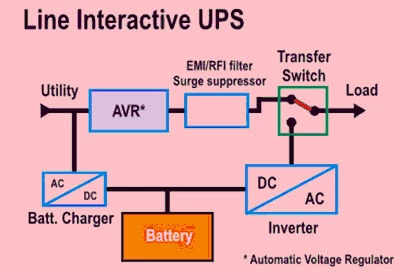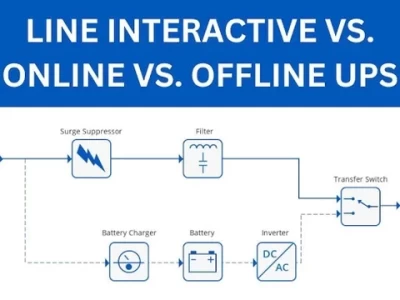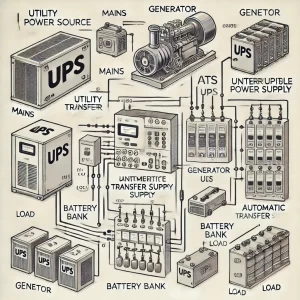Line-Interactive UPS: Features and Affordability

Line-Interactive UPS Systems: Features and Affordability
The rise of the Internet of Things (IoT) is transforming how we interact with devices, and Uninterruptible Power Supplies (UPS) are increasingly part of this connected revolution. Line-interactive UPS systems, in particular, are evolving with network connectivity, remote monitoring, and intelligent features, bringing new levels of visibility and automation to power protection strategies.
Visit Our UPS Systems Study Course
Network Connectivity: The Foundation of Smart UPS
Modern line-interactive UPS units often feature built-in network ports (Ethernet) or offer network management cards as an option. This connectivity enables the UPS to communicate with other devices and systems across a network or the internet.
Several communication protocols are commonly employed:
SNMP (Simple Network Management Protocol): A widely used standard for monitoring and managing network-connected devices.
HTTP/HTTPS: Allows access to the UPS status and management functions through a standard web browser.
Modbus: A protocol often used in industrial and automation environments.
Remote Monitoring: Power Insights at Your Fingertips
Network connectivity grants access to a wealth of real-time UPS data, including:
Input/Output Voltage and Frequency: Track power conditions to detect anomalies.
Battery Status: Monitor battery health, charge level, and estimated runtime.
Load Levels: View power consumption trends of connected equipment.
Events and Alarms: Receive notifications of power outages, overloads, or battery issues.
Remote monitoring software or cloud-based platforms consolidate information from multiple UPS units, providing a centralized dashboard for power management across distributed sites.
Automated Actions: Intelligent Shutdown and Beyond
Smart line-interactive UPS systems often couple monitoring capabilities with automated actions, especially critical for unattended environments:
Graceful System Shutdown: During extended outages, the UPS can trigger an orderly shutdown of connected servers and computers to prevent data loss or corruption.
Virtual Machine Migration: In virtualized environments, smart UPS systems can integrate with software to migrate virtual machines to unaffected hosts.
Remote Notifications: Receive alerts via email, SMS, or push notifications for crucial events.
Benefits of Integrating Line-Interactive UPS into IoT
Proactive Maintenance: Identify potential issues before they cause downtime.
Enhanced Reliability: Automated shutdown procedures safeguard critical systems.
Optimized Energy Usage: Data insights can inform energy-saving strategies.
Centralized Management: Simplifies monitoring in multi-site or remote setups.
Security Considerations
Like any network-connected device, smart UPS systems warrant security attention. Implementing robust security measures, such as strong passwords, firmware updates, and network segmentation, is vital to minimize the risk of unauthorized access or cyberattacks.
The integration of line-interactive UPS systems into the IoT landscape offers significant advantages in monitoring, control, and automation. These smart capabilities increase resilience, empower informed decision-making, and streamline power management operations across both small-scale and geographically dispersed networks.
IoT Integration and Smart UPS Solutions
The rise of the Internet of Things (IoT) has led to the development of Smart UPS solutions that further enhance the capabilities of Line-Interactive systems. These smart UPS units can communicate with other IoT devices and systems, enabling automated responses to power events and environmental conditions.
For example, a Smart UPS system could trigger the shutdown of non-essential equipment during a power outage to conserve battery life for critical systems. It could also communicate with a building management system to adjust lighting or HVAC settings based on power availability.





